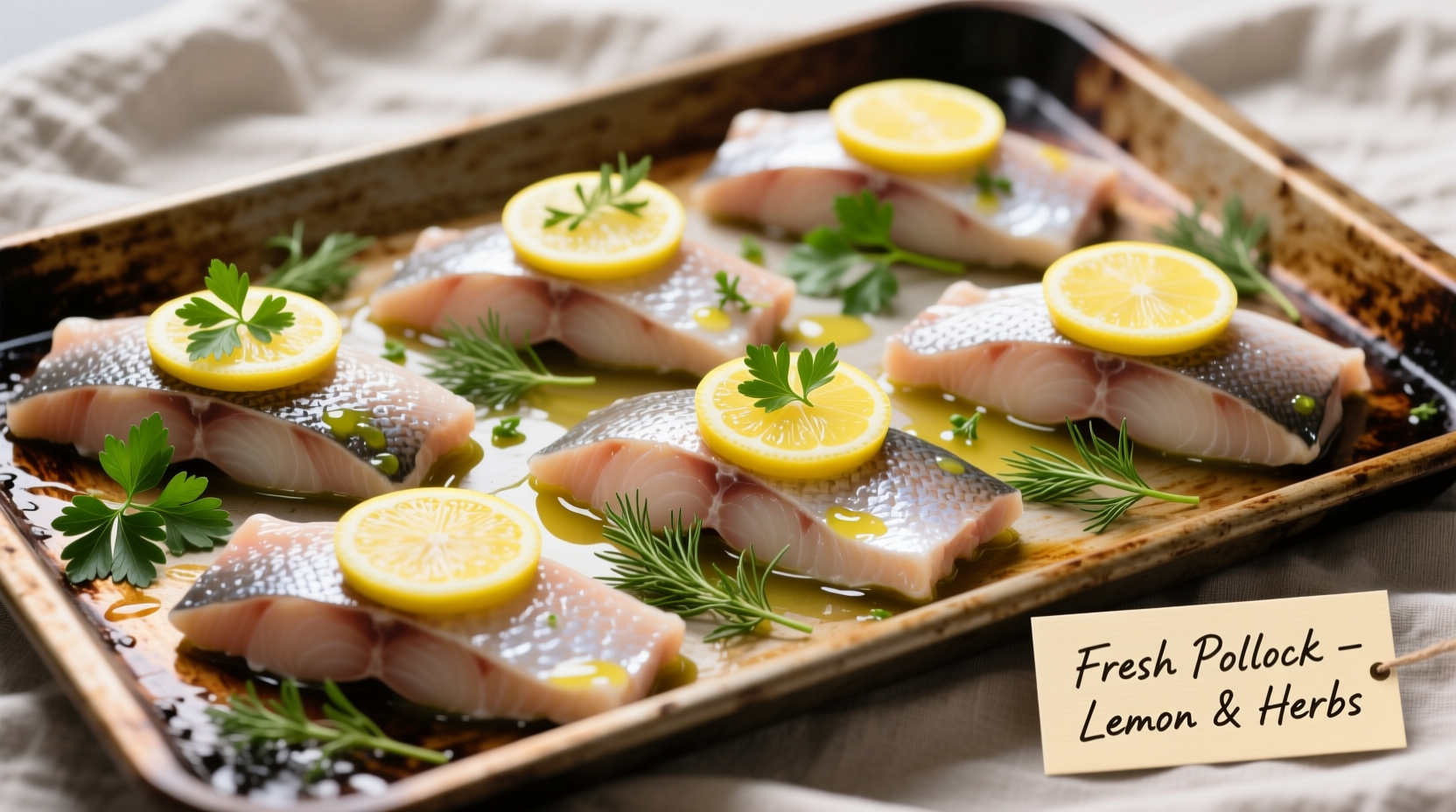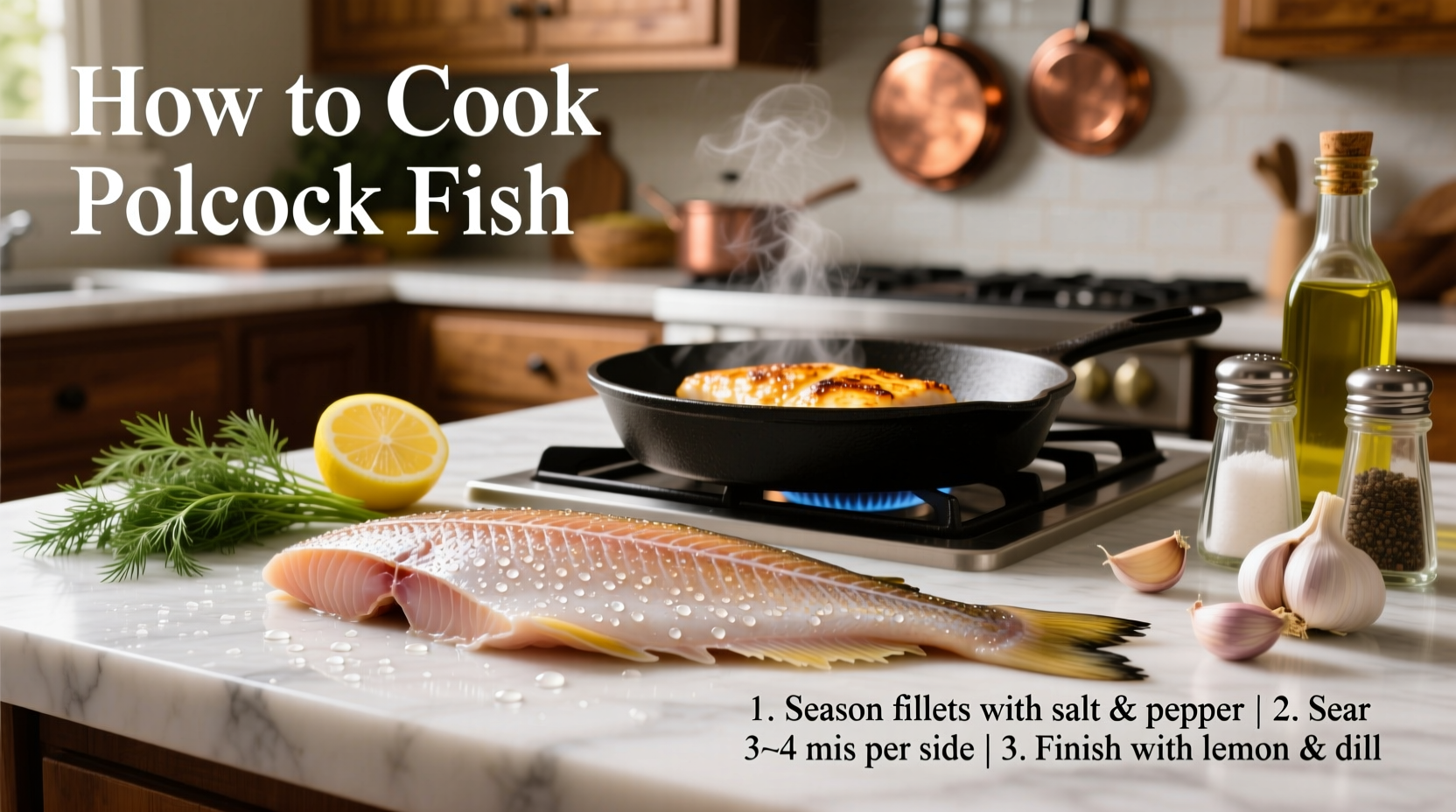Pollock's delicate texture and affordability make it America's most consumed white fish, with over 3 million tons harvested annually in sustainable Alaskan fisheries. As a culinary specialist with decades of seafood expertise, I've perfected foolproof techniques that prevent the common pitfalls of cooking this lean fish: dryness, sticking, and flavorless results. Whether you're using fresh fillets from the market or responsibly sourced frozen blocks, these methods deliver restaurant-quality results every time.
Your Pollock Cooking Roadmap
Follow this sequence for perfect results – skipping steps causes most home cooking failures:
- Selection & Thawing: Choose firm, translucent fillets with ocean scent (avoid yellowing)
- Dry Brine: 15-minute salt treatment (critical for moisture retention)
- Pat Dry: Remove ALL surface moisture with paper towels
- Cook Immediately: Don't delay after prepping
- Check Temperature: Use instant-read thermometer at thickest point
Why Pollock Deserves Your Attention
Often overshadowed by cod, pollock offers distinct advantages:
- 60% lower cost than cod while providing identical protein (22g per 4oz)
- MSC-certified sustainable stocks per Marine Stewardship Council
- Neutral flavor profile absorbs seasonings beautifully
- Cooks 3 minutes faster than cod due to thinner fillets

Cooking Method Comparison
Choose based on your equipment and desired texture. All times assume 6oz fillets at room temperature:
| Method | Temp/Time | Texture Result | Best For | Common Mistake |
|---|---|---|---|---|
| Baking | 400°F / 12-15 min | Flaky throughout | Weeknight meals | Overcrowding pan |
| Pan-Frying | Medium-high / 3-4 min/side | Crisp skin, tender inside | Quick dinners | Wet fish sticking |
| Grilling | 450°F / 8-10 min | Charred exterior, moist center | Summer cooking | Flipping too early |
| Steaming | High heat / 6-8 min | Ultra-tender, moist | Dietary restrictions | Overcooking |
Baking: The Foolproof Weeknight Method
Ideally suited for beginners, baking eliminates guesswork while delivering consistent results. The USDA-recommended 145°F internal temperature is easily achieved without drying:
- Preheat oven to 400°F with rack in center position
- Line baking sheet with parchment (never foil – causes steaming)
- Arrange pat-dry fillets with 1-inch spacing
- Brush with 1 tsp oil per fillet (avocado oil preferred)
- Season: 1/4 tsp garlic powder + lemon zest per fillet
- Bake 12 minutes for 1-inch fillets (15 max for thicker cuts)
- Rest 3 minutes before serving – carryover cooking completes the process
Pro Tip: Place lemon slices directly on fish during last 5 minutes for subtle citrus infusion without bitterness.
Pan-Frying Without Sticking
The #1 cause of broken fillets? Moisture. Follow this chef-tested sequence:
- Heat 2 tbsp oil in cast-iron skillet until shimmering (375°F)
- Season fish but skip flour – creates gummy texture
- Place fish away from you to prevent oil splatter
- DO NOT MOVE for full 3 minutes – critical for crust formation
- Flip once using thin metal spatula at 45-degree angle
- Cook 2-3 minutes more until opaque
For restaurant-style presentation, add 2 tbsp butter and fresh thyme during last minute, basting the top continuously.
When Methods Fail: Context Boundaries
Not all techniques work universally. Avoid these mismatches:
- Never pan-fry frozen pollock – moisture causes dangerous oil splatter and steaming
- Don't grill thin fillets (<1/2 inch) – falls through grates (use cedar plank instead)
- Avoid high-acid marinades >30 minutes – citric acid "cooks" fish prematurely
- Steaming isn't for crispy skin lovers – produces delicate texture only
Serving & Flavor Pairings
Pollock's mild flavor shines with bright, acidic accompaniments:
- Cold Sauce: Dill-yogurt sauce (Greek yogurt + lemon juice + fresh dill)
- Hot Sauce: Brown butter-caper sauce (don't boil – kills delicate flavor)
- Perfect Sides: Roasted fennel, lemon-herb quinoa, or sautéed spinach
- Wine Pairing: Unoaked Chardonnay or dry Riesling
Leftover tip: Flake cooled pollock into fish tacos with cabbage slaw and lime crema – holds up better than crab in this application.
FAQs About Cooking Pollock
Can I cook pollock from frozen without thawing?
Yes, but only by baking. Increase oven temperature to 425°F and cook 20-25 minutes. Never pan-fry or grill frozen pollock – excess moisture causes dangerous splatter and uneven cooking. Always verify 145°F internal temperature.
Why does my pollock always stick to the pan?
This occurs when surface moisture isn't fully removed. After patting dry with paper towels, let fillets rest 5 minutes at room temperature. Ensure oil is shimmering hot (375°F) before adding fish, and never move the fillets during the first 3 minutes of cooking – this allows the crust to form.
What's the best oil for cooking pollock?
Use oils with high smoke points: avocado oil (520°F), refined coconut oil (450°F), or ghee (485°F). Avoid olive oil for pan-frying – its low smoke point creates bitter compounds. For baking, neutral oils like grapeseed work best to avoid flavor competition.
How can I tell when pollock is perfectly cooked?
Insert an instant-read thermometer into the thickest part – 145°F is USDA safe temperature. Visually, the fish turns opaque white and flakes easily with a fork. Overcooked pollock becomes dry and chalky with visible moisture loss. Remember: carryover cooking adds 5°F after removal from heat.











 浙公网安备
33010002000092号
浙公网安备
33010002000092号 浙B2-20120091-4
浙B2-20120091-4